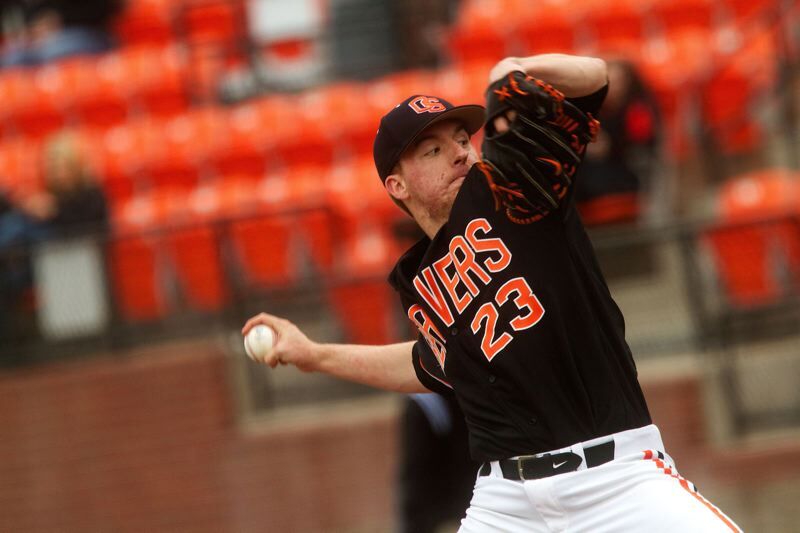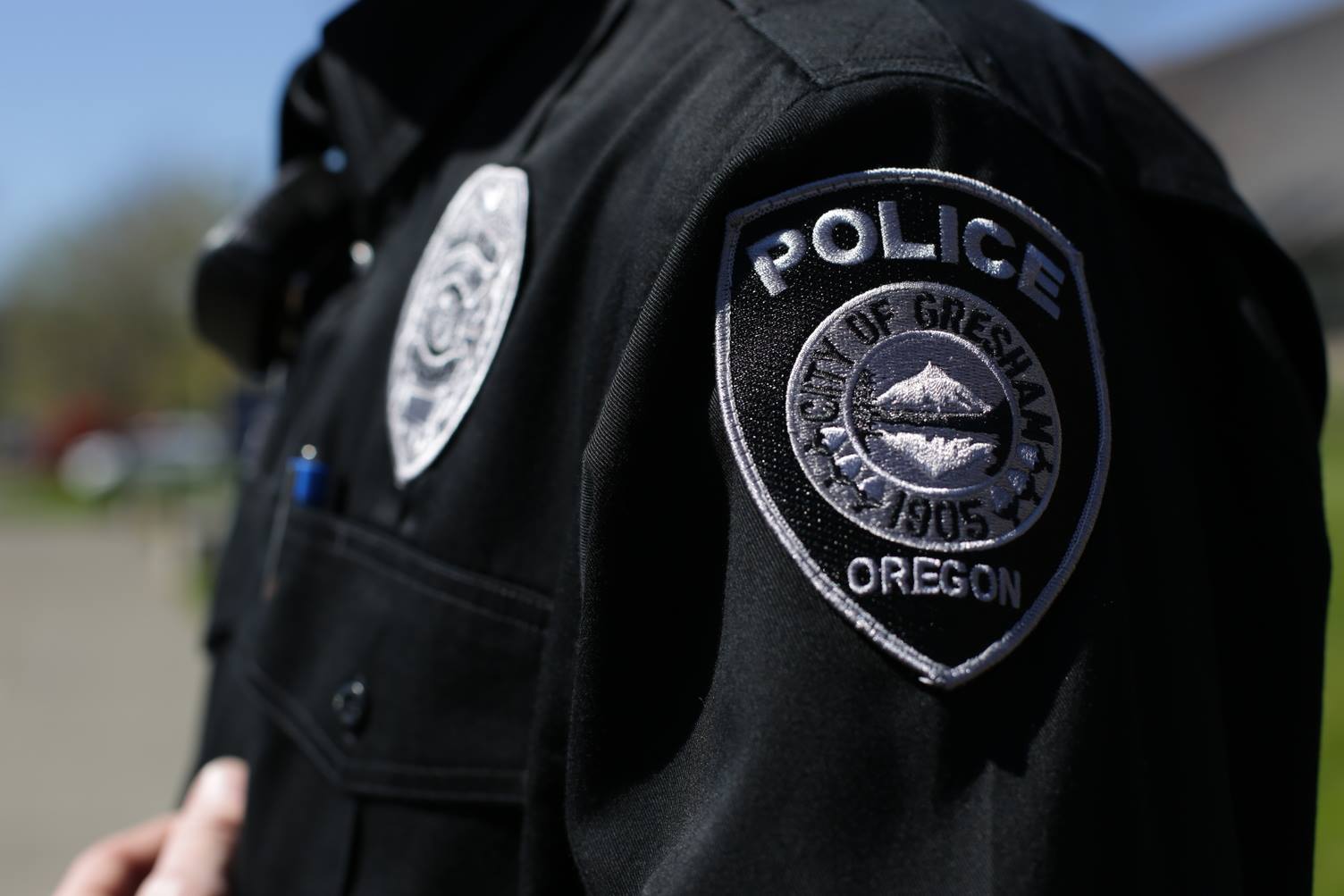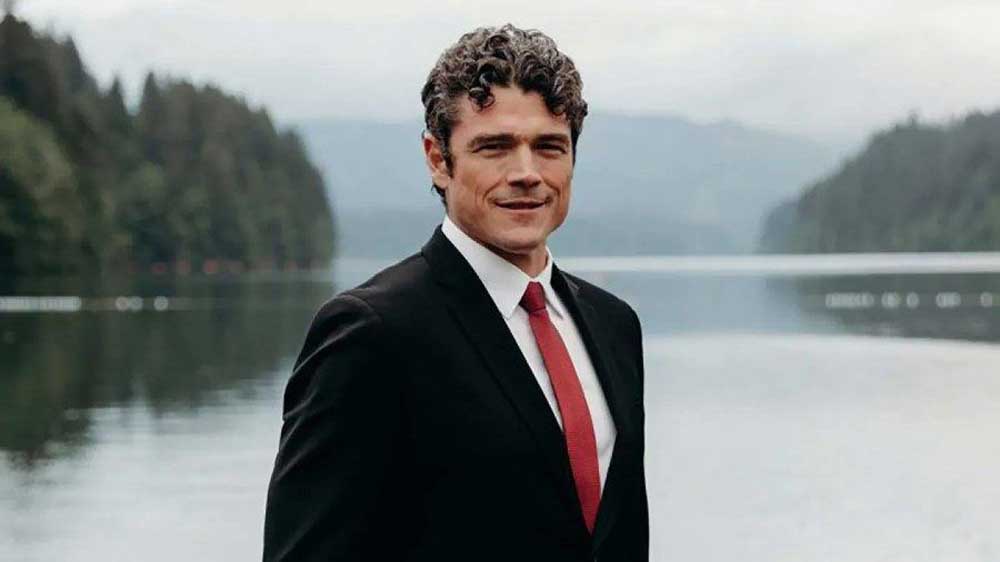Beavers baseball: youngest team, most difficult schedule
Published 12:00 am Wednesday, December 10, 2014

- Andrew Moore will be back as the marquee member of Oregon State's starting rotation next season.
CORVALLIS — Pat Casey will enter his 21st season as Oregon State’s baseball coach with a double challenge.
Trending
“It’s a combination of maybe the youngest team we’ve had and the most difficult schedule,” Casey says.
The two-time defending Pac-12 champion Beavers will open the 2015 season with eight games in Surprise, Ariz., against such opponents as Michigan State, Oklahoma, Oklahoma State, Kansas and Kansas State. They’ll follow with a pair of home series with Fresno State and Cal Poly. Once Pac-12 play begins, Oregon State will visit for series at UCLA, Arizona State, Stanford and Oregon.
“I wouldn’t be surprised if our strength of schedule is No. 1 in the country,” Casey says. “No doubt, our guys are going to have their feet to the fire immediately.”
Trending
Casey and his coaching staff — Pat Bailey, Nate Yeskie and Andy Jenkins — aren’t exactly waving the white flag, however.
During fall practice, they welcomed a recruiting class that was ranked ninth nationally by Baseball America. Among the incoming rookies who made an impression: pitchers Luke Heimlich, Ryan Mets, Mitch Hickey, Sam Tweedt and Drew Rasmussen, catcher KJ Harrison, infielders Christian Donahue, Michael Gretler and Jackson Soto and outfielders Elliott Cary and Joe Gillette.
Heimlich, a 6-foot, 180-pound left-hander, could be a member of the weekend starting rotation. Rasmussen, a 6-1, 225-pound right-hander, might take over the closing role from junior Max Engelbrekt, likely to redshirt after knee surgery. Mets, a 6-1, 195-pound southpaw, and Hickey, a 6-foot, 175-pound right-hander, and Tweedt, a 6-2, 205-pound right-hander, figure to throw out of the bullpen.
“We expect a freshman in our rotation,” Casey says. “We’ll probably set up with a freshman, close with a freshman.”
Harrison is likely to back up sophomore catcher Logan Ice and could see time at designated hitter or the outfield. Donahue, Gretler, Cary and Gillette should compete for starting jobs. Soto could be the backup to junior first baseman Gabe Clark.
“The game’s going to be in the future for a while,” Casey says.
That doesn’t mean the Beavers will concede a crack at a third straight conference crown.
“I don’t think of any year as a rebuilding year,” says Bailey, in his eighth year as Casey’s right-hand man. “We do have a lot of freshmen and sophomores, but we always have high expectations.
“We have some talented position players, and we’ll have good team speed. We have some talented young pitching. A key for (the pitchers) will be what it was last year — throw a lot of strikes, and we’ll defend behind you.”
In recent years, Oregon State teams have had seniors who have provided leadership. With outfielder Michael Howard probably redshirting due to a shoulder injury, the only seniors who figure to contribute in 2015 are reliever Zack Reser and catcher/outfielder Dane Lund, the latter playing for the Beavers for the first time after a transfer from San Jose State.
Gone are Pac-12 pitcher of the year Jace Frye and All-American southpaw Ben Wetzler, two-time Pac-12 player of the year Michael Conforto, slugging outfielder Dylan Davis, four-year starter Kavin Keyes and plucky second baseman Andy Peterson. That’s a load of material to lose.
That’s not to say there won’t be experienced talent on hand. Junior right-hander Andrew Moore, a first-team All-American as a freshman who played on Team USA last summer, will be the marquee guy in the starting rotation. Clark seems a likely clean-up hitter. First-team all-Pac-12 selection Jeff Hendrix will patrol center field. Last year’s premier freshmen trio of Ice, shortstop Trever Morrison and third baseman Caleb Hamilton, will be pressed into more significant roles.
But the buzz during fall was about the newcomers who could make an immediate impact.
“There is going to be good competition for some spots,” Casey says. “One thing I’m pretty certain of, there won’t be a set lineup for a lot of positions until the middle of the season.”
With Wetzler and Frye departed, Heimlich and JC transfer Travis Eckert could join Moore in the weekend rotation.
Heimlich gave up his senior year of high school (as did Keyes four years ago) in Puyallup, Wash., to enroll a year early at Oregon State,
“Luke is advanced for a kid his age (18),” says Yeskie, in his seventh year as pitching coach. “He is very mature in what he does. He has great command of his pitches. He possesses qualities like Frye as far as the movement with the fastball, but he’s also a little like (ex-OSU ace Sam) Gaviglio with his calm understanding.”
Adds Casey: “Luke has shown a lot of poise in the short period of time he’s been here. Without question, he has enough stuff to pitch for us. And he’s coming into a very open situation, so he’ll have that opportunity.”
Eckert is a 6-2, 190-pound junior right-hander out of Clark College by way of Austin, Texas. He was good enough in fall ball that he has the inside track on the job as Sunday starter.
Then there is Moore, the junior right-hander out of North Eugene High whom Yeskie believes is ready to assume the ace’s role.
“His time with Team USA last summer validated in his mind what his coaches knew all along,” Yeskie says. “It’s like, ‘OK, I’ve arrived.’ He’s starting to understanding who he is on this team. He’s assuming a leadership role. (Matt) Boyd is gone. Wetzler is gone. He’s comfortable with his spot.”
Jenkins calls Harrison, a 6-foot, 190-pound right-handed batter from Kailua, Hawaii, “a really advanced hitter to all fields. He reminds us of Mike (Conforto) as a freshman at the plate in terms of both bat path and the total package.”
Cary, the Gatorade player of the year as a senior at Clackamas High, is a 6-1, 170-pound left-hander who struggled during the fall but has plenty of upside.
“He’s going to be a big-time guy,” Jenkins says. “It’s a matter of time.”
Clark, who hit .280 with 34 RBIs last season, should be ready for full-time duty at first base.
“Gabe had the best fall ball of anybody since I’ve been here,” says Jenkins, in his fourth year at OSU. “He hit five or six home runs and pretty much squared up on every ball. He’s more confident, more grown up.”
Morrison will return at shortstop, but there is competition at second and third base. Hamilton, who played third as a freshman, could move to second if Grettler wins the third base job. If Donahue plays better than Grettler, Donahue will play second and Hamilton will stay at third.
Hendrix is a fortress in center, with Cary, Gillette, Donahue and JC transfer Kyle Noback in the mix to play the corner outfield positions. Jenkins says the 5-7, 180-pound Lund, who practiced but was ineligible last season due to the transfer, will get his chances.
“He’s kind of a dirt dog, a cocky little bowling ball who plays hard,” Jenkins says. “He could add some leadership and a presence.”
OSU coaches are also excited about the dozen prep seniors who recently signed letters-of-intent.
Two of them are shortstops — Cadyn Griener of Las Vegas and Nick Madrigal of Elk Grove, Calif. — who likely will attract plenty of attention in next June’s major league draft.
“Those two kids are special, blessed with great speed and hitting ability,” Bailey says.
Three of the signees are in-state players — pitcher David Brosius of McMinnville, catcher/outfielder Alex O’Rourke of Pendleton and catcher/first baseman Zak Taylor of Sherwood. Brosius, one of five pitchers in the recruiting class, is the son of former major league third baseman Scott Brosius, the coach at Linfield.
Six of the signees played in last summer’s Area Code Games: Grenier, Madrigal, Taylor, first baseman/outfielder Trevor Larnach from Pleasant Hill, Calif., and pitchers Eric Parnow of Petaluma, Calif., and Ian Oxnevad from Shoreline, Wash.
kerryeggers@portlandtribune.com
Twitter: @kerryeggers







